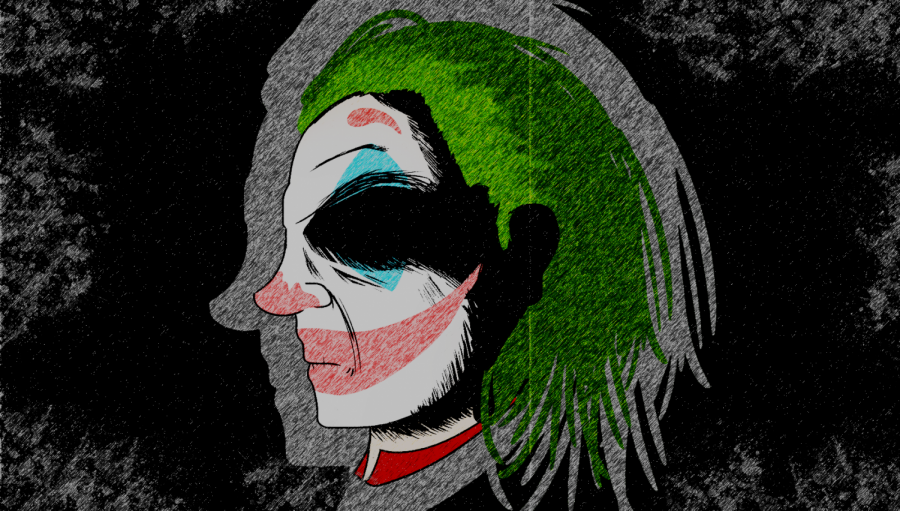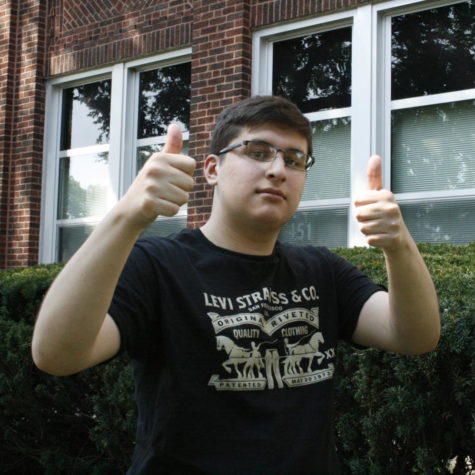Welcome to society: An analysis of “Joker”
The Joker is a complex character, I’m just happy they did it right this time around.
October 11, 2019
(Disclaimer: Mentions plot points that are not featured in the trailers.)
October is a month of horror and masquerades, which made for an amazing atmosphere for the debut of Todd Phillips’ “Joker.” The main star, Joaquin Phoenix, did not disappoint in portraying Phillips’ take on the Joker Character.
The movie follows an Arthur Fleck (Joker) and details the dark events that came to pass that created the Joker persona. The R rated film takes a much different path than normal comic book movies end up taking. The writers weren’t afraid to get really dark, really quick, which I believe is a good thing. The Joker character has had a questionable psyche ever since he was introduced in the 1940’s, so it was a good choice to make the movie reflect that insanity as it builds up throughout the plot.
Unlike a lot of DC films, which are all based in the comic book realm, “Joker” is based more on the grittiness of a disturbed man’s life rather than fictitious stories of a spandex wearing crime-fighter. We can see that grittiness during the first half of the movie, as we get taken though Fleck’s life as a clown for hire, as well as seeing him taking care of his mother. The second half, although crazy, still is in the realm of possibility. There are typically amazingly choreographed, but impossible fight scenes in comic book movies. Joker, however, has no huge fight against some impossible foe. Each encounter is grounded in real life, and could happen within the confines of reality, which was a good idea for this movie as it made Fleck come across as more human.
The cinematography, and writing is outstanding as well. The movie used dark colors a majority of the time to amplify the atmosphere around the movie. The warmness of the color changed throughout the movie and corresponded to Fleck’s general mood in the given setting and time. In the beginning it was generally dark and moody, however over the course of the film Fleck’s surroundings began to contain livelier color by the end, while Fleck was dancing on the steps as Joker, the sun was out and there was lots of color littering the screen showing he has found happiness for the first time in his life.
There were also a couple scenes which featured Fleck being pushed to the ground and being kicked. While painful to watch due to people abusing him only because of his clown look, these scenes show how he, as well as a lot of the poor, are treated by society in Gotham. The movie has a strong presence of revolting against the elite in Gotham, and the poor are the ones doing it. The rich say they are sympathetic toward them, however they still make fun of their problems. They joke about the “super rats” running amok in the streets due to the trash strike causing garbage to pile up, as well as calling the poor people of Gotham “clowns” which ends up giving the revolt a face to tie with the actions. These details, though small, really add to the movie and show how things work in the city without actually having to explain it in fine detail.
As a whole, this movie gives me a breath of fresh air in the comic universe. As most hero movies feature a pretty clear conflict and enemy, “Joker” gives us that bit of intrigue of knowing we are watching the protagonist as he morphs into an antagonist. That plays a big part in what keeps us on the edge of our seats until we finally see Fleck dawn his dreaded visage, with a score to settle with society.



